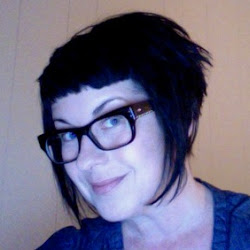 Today’s guest post is by Lindsay Bell.
Today’s guest post is by Lindsay Bell.
Unless you’ve been living under a rock these last few months, you’re well aware (and probably sick to death of) the whole Lance Armstrong debacle and resulting LIVESTRONG PR crisis.
Personally, I’ve never liked the man (ducks as Gini throws a heavy shoe at me).
He just always rubbed me the wrong way.
There’s something…unctuous about him.
Something a little too perfect.
Turns out my instincts were right.
Armstrong No – LIVESTRONG Yes
While I have no sympathy for Lance Armstrong, I do have tremendous sympathy for the brand. The LIVESTRONG foundation does immensely good work for cancer survivors, and has done so for the last 15 years or more.
The problem is the brand itself, LIVESTRONG, was perma-linked to Mr. Armstrong, its founder, and his own cancer survivor story and multiple cycling successes.
So, how does an organization with such a recognizable brand and spokesperson recover from a crisis as, well, heartbreaking as Lance Armstrong’s duplicitousness?
The Wall Street Journal recently wrote a great interview style article with the LIVESTRONG chief executive Doug Ulman, himself a cancer survivor.
In the piece, Mr. Ulman was quite forthcoming about how they’ve been dealing with the fallout, and their plans for recovery. As I read it, I realized this information could help any brand dealing with a public image brouhaha such as this one.
Recover from a Crisis
Over-communicate: Ulman states where normally they held monthly all-staff meetings…during the last four months they’ve had close to 30. Some have been five minutes, some two hours, but the key here is he’s making sure his teams are informed and empowered. Ensuring everyone is on the same page and has the latest company news will help you move forward with your crisis recovery plans.
Don’t go dark: LIVESTRONG was advised to go dark after the news broke, and to be fair, many organizations would do just that. Sit back, regroup. That’s the worst thing you can do. In this day and age of instant news and sharing, the outside world will own your story faster than you can click a mouse. You want to control and get on top of whatever happened – that said, NO SPIN – make sure you already have an emergency response plan in place for sudden worst case case scenarios.
Lean on industry peers or close business associates: While this might be slightly easier for charities such as LIVESTRONG that are doing good work, it’s important across any industry. You don’t need to shoulder this on your own. Don’t be afraid to reach out to trusted peers for advice, guidance, or simply some support. As Ulman says, “When you’re going through a challenging period, a trying period, it’s incredibly helpful to hear affirmation from….people you respect.”
Don’t be afraid to make big decisions: Rather than maintaining the status quo while you recover, or worse sticking your head in the sand, think instead about making big changes. If the disaster was due to a high profile figurehead as that at LIVESTRONG , you will need to re-jig your marketing campaigns, and fundraising efforts (for example). If you’re a consumer brand, you need to also consider your TV or radio spots. If you have to pull ads, you should have something ready as soon as possible to replace them with. See above regarding don’t go dark.
No one ever wants to consider the next brand/company public perception explosion might be yours. Yet, as we all know, life can throw some crazy curveballs. If it does happen to you, think about all those yellow bracelets, and remember you’re not alone.
Take a lesson from LIVESTRONG: With a chief executive like Doug Ulman at the helm, I’m sure they are going to move on and keep doing the incredible work that they should be recognized for.
Note from Gini: It pains me I called in a favor to help me out while I’m out sick and THIS is what Lindsay has for me. Thankfully it was more about LIVESTRONG and less about her disdain for the man who got me into cycling.
Oh! And! Don’t forget we have Chris Brogan here tomorrow at noon ET for a Livefyre Q&A.
Lindsay Bell is the content director at Arment Dietrich, and works in Toronto. A former TV producer, she’s a strong advocate of three minutes or less of video content. She has a cool kid, a patient husband, two annoying cats, and just welcomed Hank, a Vizsla/Foxhound cross, into her home.